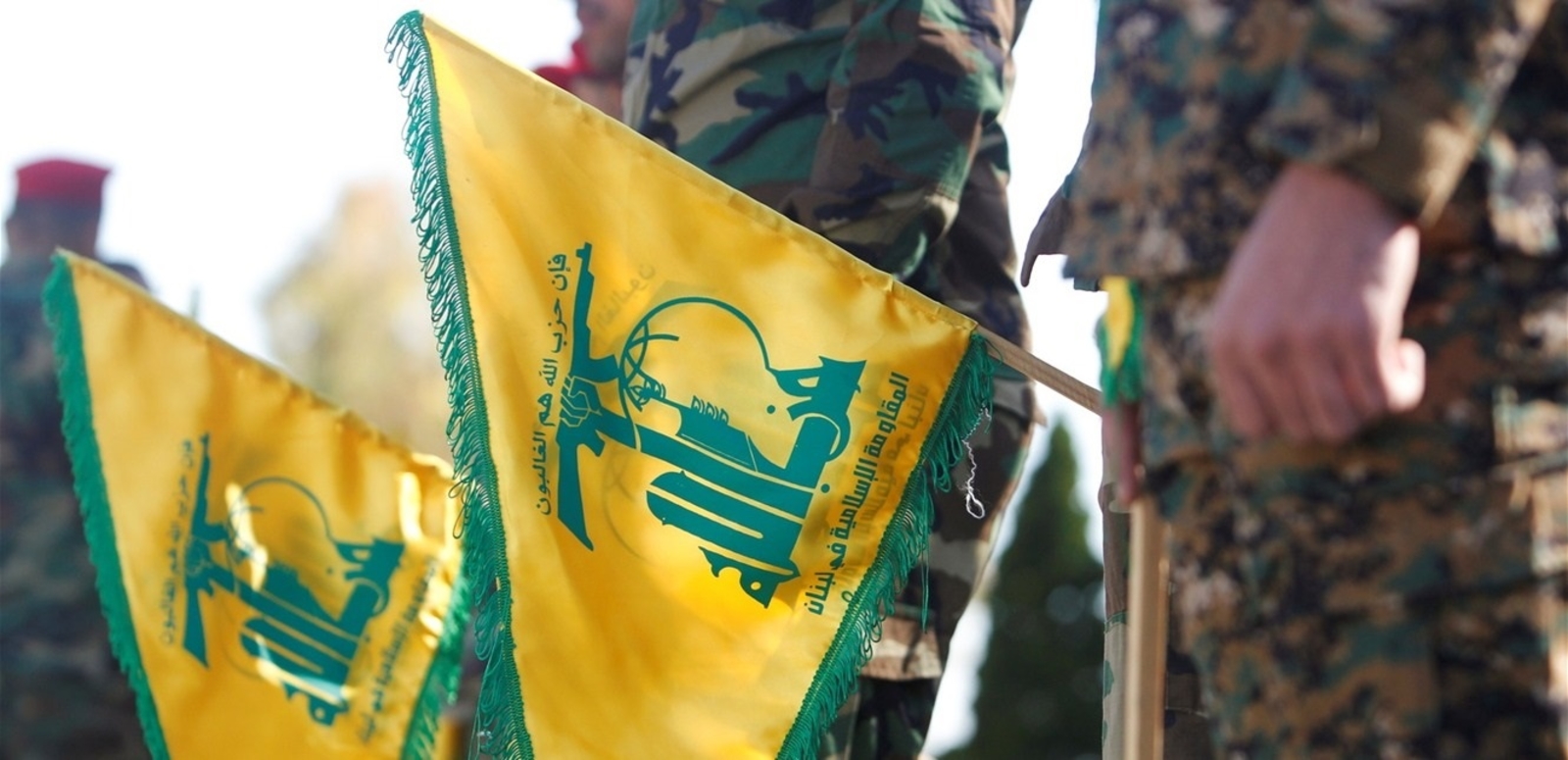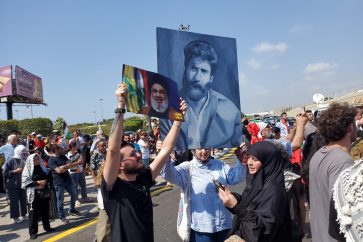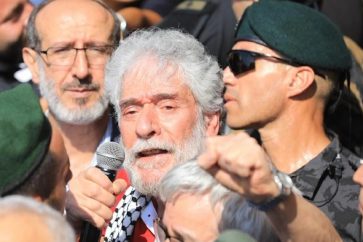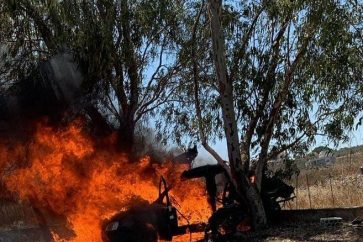During his Sunday speech in which he announced Operation Arbaeen Day, in response to the assassination of senior Hezbollah commander Fuad Shokr in Beirut’s southern suburb (Dahiyeh) on July 30, Hezbollah Secretary General Sayed Hassan Nasrallah revealed that the reprisal strike’s two main targets: Glilot military intelligence base which houses Unit 8200, a key Israeli Military Intelligence Directorate (Aman) branch, and Ein Shemer airbase.
Lebanese journalist Abbas Fneish offered his insights of Sunday operation, as he refuted Israeli lies and disclosed how Hezbollah regained deterrence against the Israeli enemy.
Refuting Israeli Lies
In an interview with Al-Manar on Monday, Fneish described Operation Arbaeen Day as the “most important slap against Israel.”
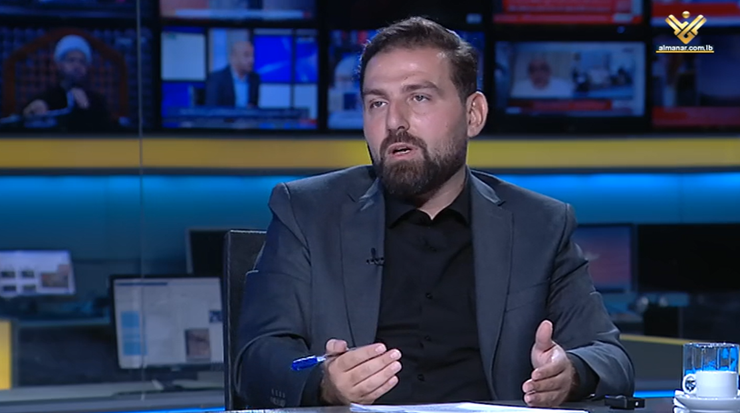
He disputed the Israeli narrative which claimed that the occupation army launched a so-called “preemptive strike” that preceded Hezbollah’s operation.
“The Israeli occupation army alleged it had staged 100 raids in which 6,000 rockets were neutralized. This number contradicts logic as it is too exaggerated,” Fneish told Al-Manar’s Manar Sabbagh during Al-Aqsa Flood Panorama talk show.
The Lebanese journalist also recalled the Israeli lies that have been propagated regarding major operations staged by Hezbollah resistance since 1982.
Foiling Israeli Objectives
Elaborating on events that followed the Israeli strike which killed commander Shokr on July 30, Fneish said it was necessary for the resistance to scrutinize the objectives of the assassination.
“The resistance assumed that the goal was to change the rules of engagement and specially to force the resistance to stop its support for Gaza,” he said, citing US pressures on Lebanon represented by US envoy Amos Hochstein’s visits to Lebanon in which he told Lebanese officials that Hezbollah has to stop its front in support of Gaza.
“The Israelis brought Beirut’s southern suburb (Dahiyeh) into the ring of fire, by targeting a big fish, namely the number one commander who led the fighting on this front,” Fneish said, referring to commander Shokr.
In this context, Fneish went on to say that the “resistance in turn set two goals in a bid torpedo the Israeli objectives of the assassination: To go ahead with the supporting front in Lebanon and to prevent the Israelis from changing the rules of engagement.”
“This is not a vengeful act of a tribal nature, but rather a response that aims to neutralize the enemy’s objectives,” the journalist told Al-Manar.
Trickery Plan
First, the resistance resumed its operations which stopped for two days following the assassination of commander Shokr and has since started to prepare the retaliation, according to Fneish.
“The resistance initially had a bank of targets from which it had to make its choice. To do so, it had to resort to trickery and misleading,” he said.
“After Sayed Nasrallah’s speech during commander Shokr’s funeral in which he assured that the response is imminent, Hezbollah plunged into a deep silence, opting for its policy of constructive ambiguity, even refusing to answer the questions of the Lebanese political leaders who had become the destination of foreign guests attempting to know the nature of the retaliation.”
“Sayed Nasrallah’s speech during a memorial service of martyr Shokr (nearly a week after his assassination) in which the Hezbollah S.G. spoke about northern occupied Palestine, gave the impression that the resistance would retaliate in this region and is not interested in a large-scale war,” Fneish added.
Sayyed #Nasrallah: #Hezbollah Response Inevitable despite #Israeli Calming Notices#نصرالله #حزب_الله #جنوب_لبنان #الضاحية_الجنوبية https://t.co/mAOhNd6TOu pic.twitter.com/QPrmIOpppY
— ManarWeb (@WebManar) August 6, 2024
Preparations for Retaliation
The journalist said that Hezbollah then intensified its pro-Gaza strikes “with the aim, among other things, to exploit them in the reprisal operation.”
“Hezbollah monitored the enemy’s movements especially in the airspace. It evacuated certain positions that were most at risk of being bombed. Even more, some qualitative pro-Gaza strikes misled the enemy into believing that it was the response.”
“But more than anything, the resistance benefited from intensifying the operations in order to carry out some maneuvers in order to uncover certain Israeli flaws and to guarantee the success of Op. Arbaeen Day.”
Fneish pointed, in this context, to the high significance of Hezbollah’s preparations, stressing that the Lebanese resistance’s measures were at a time the Israeli enemy exerts tight control in terms of military and intelligence over the entire region, and backed by both the US and UK.
“Despite this tight Israeli control, the resistance in Lebanon managed to carry out 234 pro-Gaza strikes between August 1 and August 25,” the journalist told Al-Manar.
#Israeli media: #Hezbollah drones fly from #Lebanon into #Galilee airspace#الطائرات_المسيرة #جنوب_لبنان pic.twitter.com/dSdiCkYKBa
— ManarWeb (@WebManar) August 10, 2024
Preventing the Israeli Preemptive Attack
The week before Hezbollah’s retaliation, Fneish continued, the Israeli enemy took the initiative by carrying out around fifteen raids in the Bekaa, “spreading the message that it was a preemptive strike.”
“At that point, the resistance assumed three possibilities: Israel would launch a large-scale war, limited strikes on limited targets, or that the Israeli enemy managed to know, through analysis or cross-checking or other means, the nature of the response.”
Hereby, Hezbollah considered the third scenario and tested the Israelis to see if they had discovered the Lebanese resistance preparations, according to Fneish.
At this time, Hezbollah’s Military Media published a video, entitled “Our Mounts… Our Warehouses,” in which the Lebanese resistance showcased a formidable underground missile facility Imad-4.
Back to July 29
Fneish assured that Operation Arbaeen Day made it possible to bring the equation of deterrence back to the situation that prevailed before the assassination of commander Shokr.
“In military terms, there is deterrence based on intentions and deterrence based on action. To restore the balance of deterrence, Hezbollah doesn’t need to fire 5,000 or 10,000 rockets or missiles, it doesn’t need to hit a strategic target or whatever. All what it needs is … He needs to brandish the threat of force.”
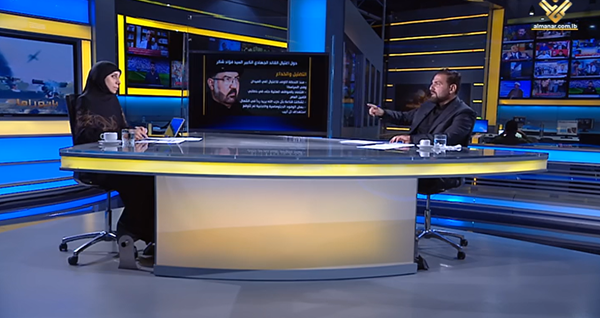
“Hezbollah in this battle put on the table courage in decision-making and courage in execution, added to a memory of key milestones since 1982, the 90s, South Lebanon Liberation in 2000, the 2006 July War, the Syrian War and others.”
Hezbollah resistance has proven that it was able to recover quickly despite the loss of three of its military commanders, including Fuad Shokr, Fneish stressed.
“The resistance brought the situation back to what it was on July 29, by clearing the Dahiyeh from the ring of fire, without giving up front supporting Gaza.”
“The Israeli enemy realized that Hezbollah’s targeting of these Israeli bases is only the minimum of what it can achieve and that it is capable of doing more,” Fneish concluded.
Source: Al-Manar English Website

